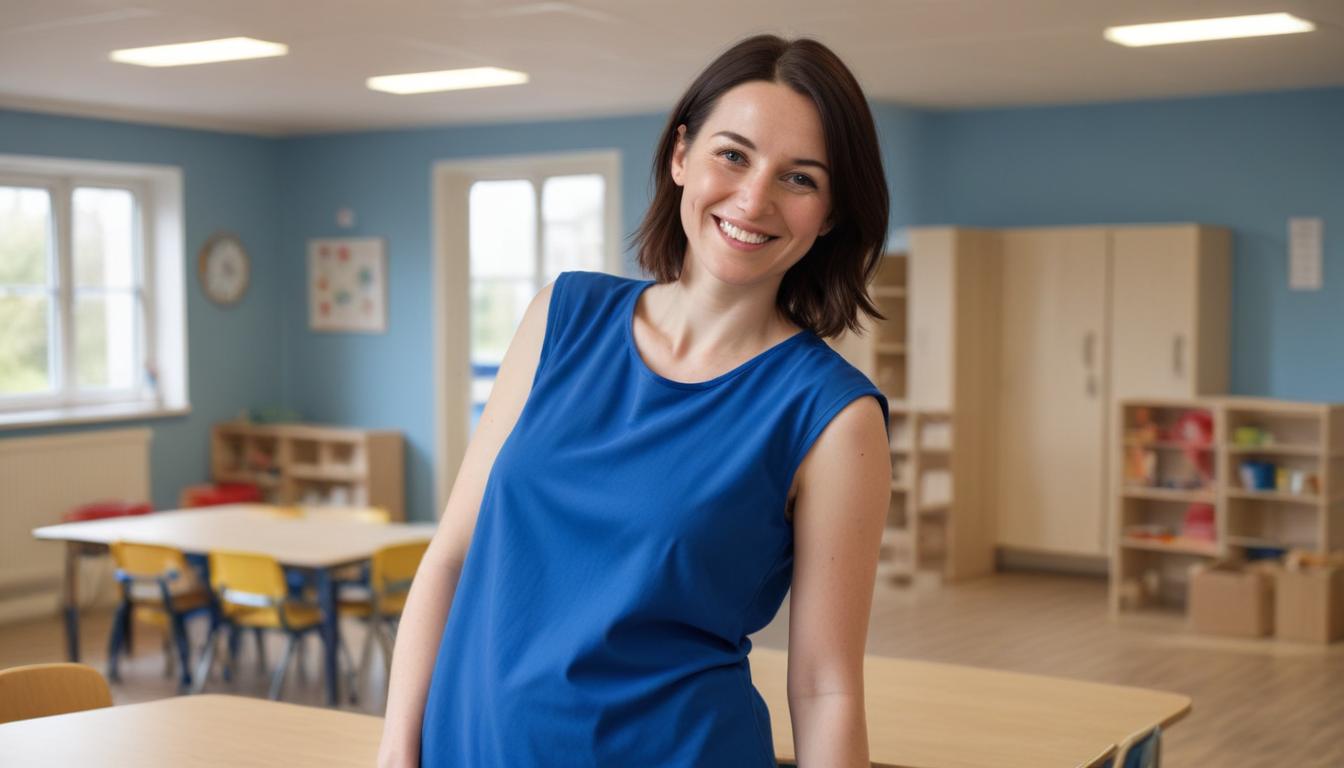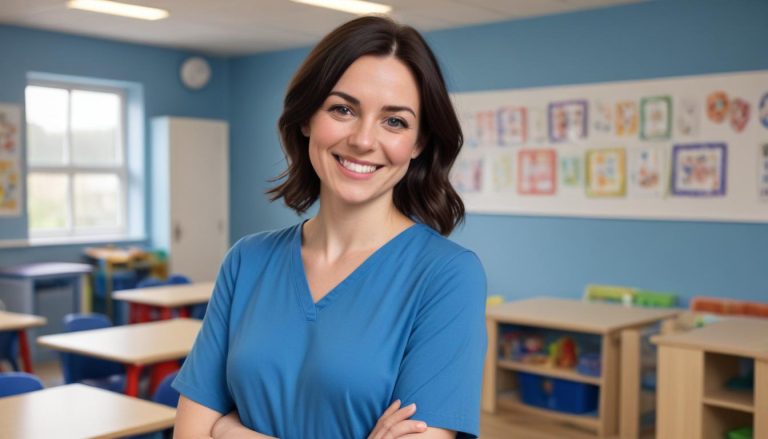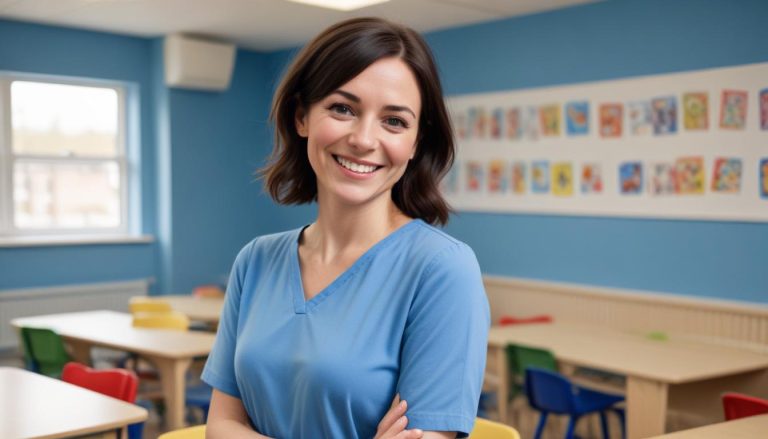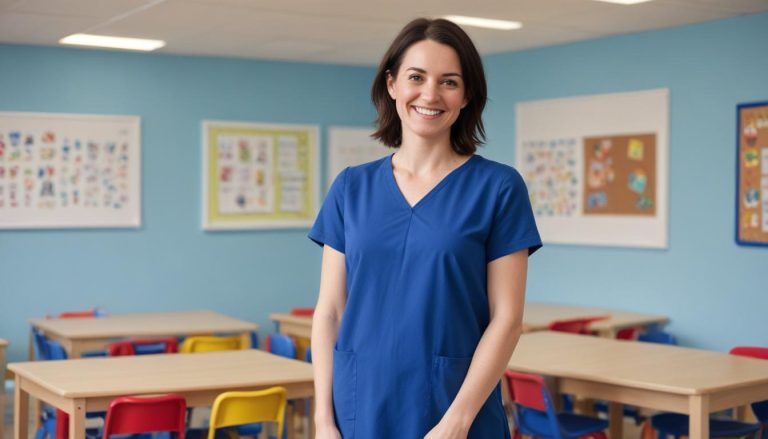This guide will help you answer 5.4 Analyse the significance of co-regulation for self-regulation.
Co-regulation and self-regulation are concepts linked to a child’s emotional and behavioural development. Both terms relate to how children manage their feelings, behaviours, and reactions.
- Co-regulation refers to the supportive interactions a child has with a responsive adult or caregiver to help them manage their emotions and behaviours.
- Self-regulation is when a child independently controls their emotional responses and behaviours.
Co-regulation serves as the foundation for building skills for self-regulation. A child’s ability to self-regulate does not develop on its own; instead, they need consistent support through co-regulation.
Definitions of Co-Regulation and Self-Regulation
- Co-Regulation: This involves a caregiver responding to a child’s emotional needs by soothing, guiding, and teaching them strategies to manage emotions. It happens in real-time when a child is struggling to cope.
- Self-Regulation: This refers to a child’s ability to independently control emotions, stay calm during stress, and make decisions without external help.
Co-regulation is the stepping stone on which self-regulation is built.
Why Co-Regulation is Significant for Self-Regulation
Supporting self-regulation requires strong co-regulation experiences early in life. Early relationships with caregivers—whether parents, practitioners, or other adults—play a key role in helping children learn how to manage themselves.
Brain Development and Emotional Regulation
Children’s brains are not fully developed at birth. The front part of the brain, the prefrontal cortex, controls self-regulation. This area continues to develop into a person’s mid-twenties.
During this time, children must rely on adults to guide and teach them how to handle their emotions and reactions. When an adult calmly supports a child during emotional moments, the adult becomes the “external regulator” until the child can take on this role alone.
How Co-Regulation Shapes Self-Regulation
Building Trust and Emotional Safety:
- Co-regulation helps children feel secure.
- If a child feels supported and calm with an adult, they are more likely to explore difficult emotions in the future.
Teaching Coping Strategies:
- Caregivers model behaviours like deep breathing, counting, or problem-solving.
- Over time, children adopt these strategies for managing stress independently.
Strengthening the Stress Response System:
- Every child experiences moments of stress or upset.
- Co-regulation helps prevent overwhelming stress by soothing a child’s nervous system.
- This teaches children to notice physical signs of stress and calm themselves before stress becomes unmanageable.
Examples of Co-Regulation in Practice
Practitioners and caregivers can use these strategies to support co-regulation:
- Responding with calmness, even if the child is upset.
- Using facial expressions and body language that show empathy.
- Speaking softly, slowly, and kindly to help the child feel safe.
For example:
- If a child is upset after losing a toy during free play, the practitioner can sit with the child, acknowledge their feelings (“I can see you’re upset about losing your toy”), and offer comfort (“I’m here to help you feel better”).
This kind of interaction eventually teaches the child that emotions are manageable and does not involve harsh punishment or ignoring the upset.
The Long-Term Impact of Co-Regulation
When a child feels safe and supported during their early years:
- They develop resilience, or the ability to bounce back from challenges.
- They learn emotional control, making it easier to handle stress later in life.
- They establish strong social skills, like communicating their needs calmly and effectively.
Without this early support, children may struggle with emotional or behavioural issues later on.
The Role of the Practitioner in Co-Regulation
Practitioners have a vital role in promoting co-regulation. They must be responsive and attentive to children’s emotions in a childcare setting.
Key practices include:
- Observing the child’s emotional cues, such as body language or tone of voice.
- Providing reassurance during challenging situations.
- Building consistent, trusting relationships with children in their care.
Practitioners foster an environment where children feel safe expressing emotions.
They may also introduce short-term strategies, such as:
- Encouraging children to name their feelings.
- Role-playing situations to help children practise problem-solving.
- Using positive reinforcement to celebrate small efforts in controlling behaviours.
The Difference Between Co-Regulation and Reactiveness
Co-regulation is proactive. It involves teaching calmness and providing tools to manage emotions before behaviours escalate.
Being reactive, on the other hand:
- Involves responding to behaviours without teaching or addressing emotions.
- May lead to inconsistency, where children are unsure if or how their needs will be met.
Reactiveness can miss the opportunity to build a child’s understanding of self-regulation.
Barriers to Effective Co-Regulation
Some challenges may affect a competent approach to co-regulating with children:
- Personal Stress: If practitioners feel stressed or overwhelmed, they may find it harder to offer calm and consistent support.
- Time Pressures: In busy settings, practitioners may feel rushed. Time pressures can lead to quick, reactive responses that lack co-regulation strategies.
- Masking Behaviour: Children who “bottle up” emotions might seem calm but still require support.
Being aware of these barriers allows practitioners to reflect and seek solutions to better meet children’s emotional needs.
The Gradual Shift From Co-Regulation to Self-Regulation
The move from co-regulation to self-regulation happens gradually. The goal is to equip a child with a set of tools they can eventually use without anyone else’s help.
Indicators that a child is beginning to self-regulate may include:
- Recognising and naming their emotions without prompting.
- Practising simple self-soothing strategies, such as taking deep breaths when upset.
- Asking for quiet time or space to calm down.
Although the skills of self-regulation may seem effortless in older children, it takes years of consistent co-regulatory support to build these habits.
How Co-Regulation Supports Long-Term Development
The benefits of co-regulation extend far beyond early childhood. Children who are supported emotionally during the early years often experience:
- Improved mental health across their lifespan.
- Greater success in school due to their ability to focus and cope with challenges.
- Stronger relationships with peers because they can express emotions clearly and empathise with others.
These outcomes reinforce the importance of consistent co-regulation in early efforts to strengthen self-regulation skills.
Practical Tips for Promoting Co-Regulation
Practitioners can help children build self-regulation skills every day by:
- Acknowledging Feelings: Always let children know their emotions are understood. You might say, “I see you’re feeling frustrated because it’s hard to wait your turn.”
- Modelling Calm Behaviour: Stay calm yourself, even if the child is upset. Children will learn by observing your reaction.
- Teaching Simple Tools: Explain and show calming techniques like belly breathing or using sensory items like a stress ball.
- Using Safe Spaces: Give children a safe, quiet corner to regain control when overwhelmed.
- Praising Efforts: Celebrate any attempt a child makes to self-regulate, even partial success.
Conclusion
Co-regulation provides children with the tools they need to cope with their feelings and behaviours. Over time, these experiences enable children to confidently manage their emotions without external help.
For practitioners, supporting co-regulation is not about solving problems for children. Instead, it is about working with children to teach strategies that they can carry through life. The gradual development of self-regulation begins with those early, caring interactions. By working with patience and empathy, practitioners play a pivotal role in shaping a child’s emotional toolkit.
Subscribe to Newsletter
Get the latest news and updates from Care Learning and be first to know about our free courses when they launch.







